The exchange rate is one of the main indicators of the country's economy. A number of factors affect its fluctuations. National currencies become cheaper if there is high inflation and unemployment in the country, there is no balance between the import of goods and exports, an unfavorable political situation. There is a situation where for national money you can buy less foreign currency and the population is undermined by the credibility of them.
In the ranking of the cheapest currency in the world, the ratio of monetary units is reduced to the US dollar.
10
Colombian peso 3070 units for 1 US dollar
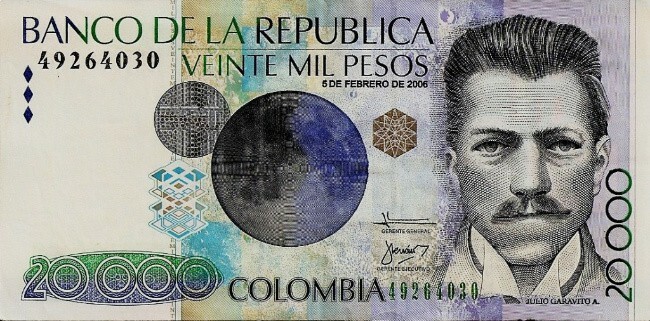
The Colombian peso ( COP ) opens the list of the cheapest currencies in the world, and it owes this to its value of 3,070 units for 1 US dollar. This monetary unit is the direct heiress of the Spanish peso, which appeared in South America with the Spaniards back in the Middle Ages. Constant crises in the country's economy led first to the loss of the gold component, and then to the silver one. The monetary unit, which was not provided with precious metals, ceased to be convertible. One peso consists of one hundred centavo, but this name appears only in official documents. In real life, because of the depreciation of the main currency, centavo is not in use.
9
Cambodian riel 4072 units for 1 US dollar
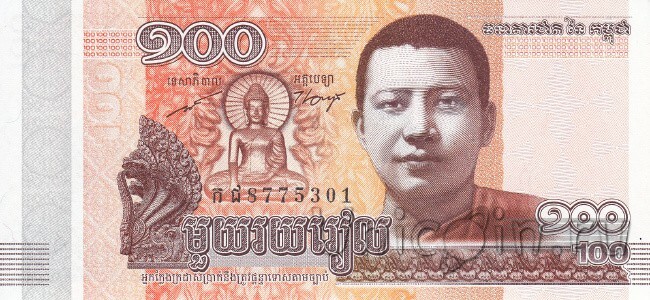
Cambodian riel ( KHR) on exchange trades for $ 1 can buy 4072 R. The currency in Cambodia was introduced for the first time in 1955, the second in 1980, but it never became popular. In the 1970s.money in the country was canceled, and the unit of account was rice, as well as Thai and Vietnamese money. Cambodians themselves prefer to pay with American money. National currency is used as a change for the dollar, euro and pound. The course of riel can change dramatically within one day. Tourists try to exchange dollars for riely with small amounts, because it's almost impossible to change them back.
8
Paraguayan Guaraní 5678 units per 1 US dollar
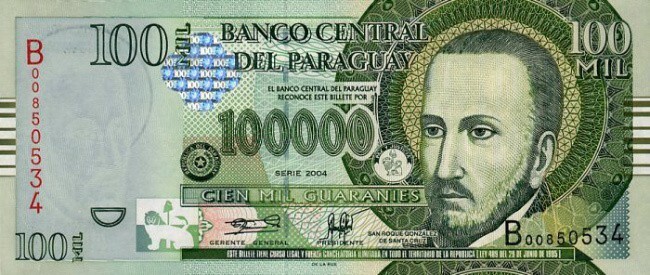
The rate of the Paraguayan guarani ( PYG) is 5678G to $ 1.Guarani came to replace the peso in 1944.Its name came from a tribe of Indians living in the territory of Paraguay before the capture of the Spaniards. Inflation in Paraguay has devalued local money, so coins of up to 10 Guaranís have become so cheap that they are difficult to find in circulation. The history of the country is full of civil wars and constantly changing dictators, which have plunged the country into poverty. During the existence of Guaraní, the government denominated the currency twice, which finally depreciated it. The last time the money for Paraguay was released at the mint of Slovakia.
7
Guinean franc 7358 units for 1 US dollar
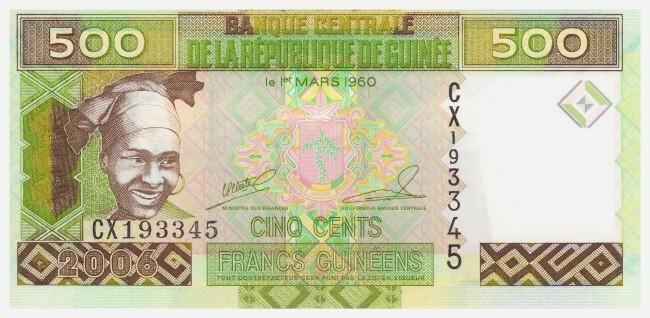
The rate of the Guinean franc ( GNF) is quoted at $ 7358FG for $ 1.The monetary unit was introduced in Guinea in 1960. This was a step towards independence and getting rid of the regional currency. Already in 1963 the reform was carried out, as the country was flooded with counterfeit bills. In 1972, the franc replaced the new force unit, which existed for 14 years. As a result, the franc returned to replace the depreciated force. An interesting fact is that unlike the bills of other African countries, the Guinean francs do not have a single portrait of a politician, a national figure, or even a single male portrait. All denominations depict smiling women in national headdresses.
6
Lao Kip 8116 units for 1 US dollar
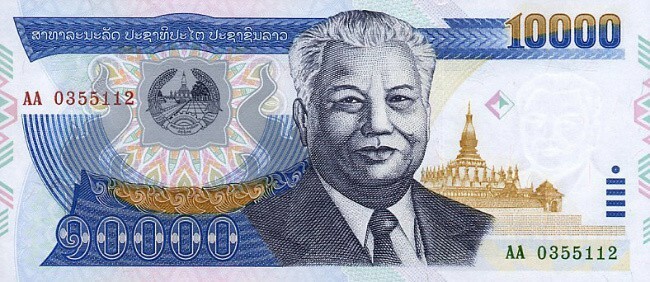
The Laos Kip ( LAK) was introduced in 1955, but the first banknotes appeared in 1957. The war in Laos, which ended in 1975, caused irreparable damage to the country's economy. Until now, industry and infrastructure are in the developing stage. The bale rate continues to fall and is 8116 K for $ 1.Coins completely came out of use, as they lost their value and represent significance only for collectors.
5
Indonesian Rupee 13614 units for 1 US dollar
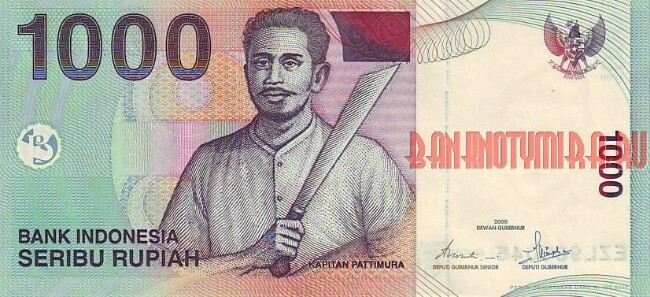
The Indonesian rupee ( IDR) was introduced in 1945 after the end of the war of independence. For 4 years it was in circulation together with the Netherlands guilder and the rupee, issued by Japan. Inflation led to the re-issue of the rupee in 1965.The financial crisis in Asia hit at the rate of the rupee, after which it was never able to recover. Now the rate is 13614Rp to $ 1.Twice the bills were made of polymer materials, so it was assumed that they would wear less and they would be harder to forge. But because of problems with computers in banks, they returned to paper money.
4
Belarusian ruble 19775 units for 1 US dollar
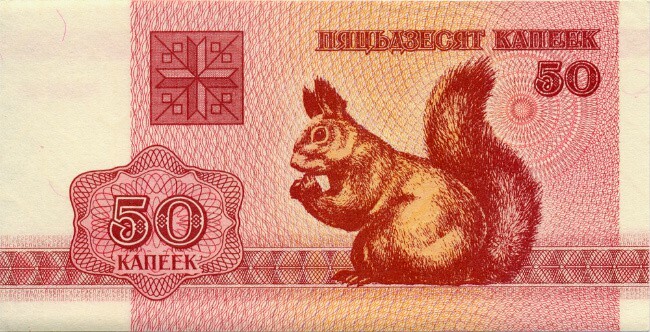
The Belarusian ruble ( BYR) is not only one of the cheapest currencies in the world, but it came in first place among the currencies of European countries with the indicator 19775 Br to $ 1.After the Soviet Union left Belarus, for the first time all the calculations were made by coupons and Soviet rubles. Only since 1993 the Belarusian ruble has become a national currency. In 1994 and 2000, the denomination of the ruble was first made 10 times, then 1000.
Until 2014, the ruble held strong positions against the dollar, but with the fall of the Russian ruble, the Belarusian began to fall.
3
Vietnamese dong 22423 units for 1 US dollar
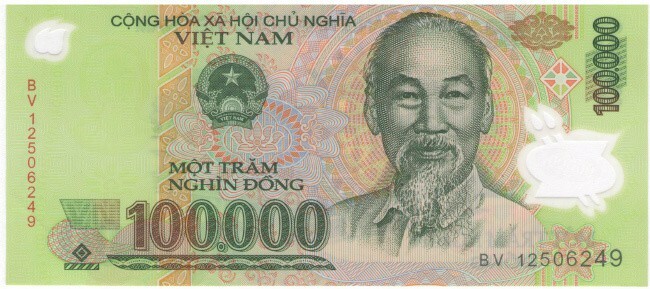
The Vietnamese dong ( VND) was put into circulation after the country gained independence from France in 1945. Numerous emissions and devaluations led to the devaluation of the dong throughout its years of existence. Today's state of affairs, in which for $ 1 give 22,423 dong is also due to China's policy. Against the backdrop of the international economic crisis, the Chinese authorities were forced to weaken the yuan's position. This, in turn, hit their competitors in export reserves, among them Vietnam.
2
Dobra Sao Tome and Principe 21975 units per 1 US dollar
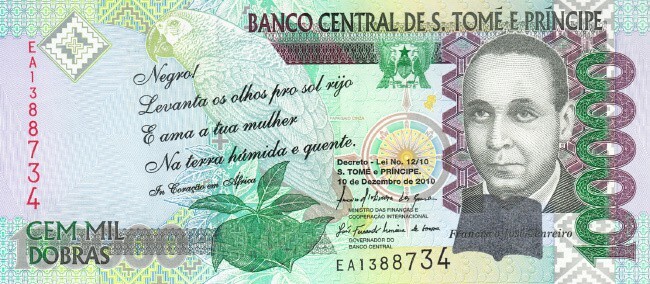
Dobrá Sao Tome and Principe ( STD) was introduced in 1977 by the Portuguese bank, since at that time this island state was a Portuguese colony. The main branch of the economy of the country since the proclamation of independence was the export of cocoa beans. The linkage of the economy to exports and a number of dry years led to a decrease in sales and the imbalance of the country's balance of payments. The last decade the republic is not able to pay external debt and almost completely imports industrial, consumer goods and all types of fuel. Good is an unstable currency, the rate of which to the dollar is 21975 Db .
1
Iranian rial 30366 units for 1 US dollar

Iranian rial ( PYG) beats all records and falls swiftly down, which is the first line in the rating. The rate to the dollar is 30366 rial. The reason for this situation was domestic inflation in the country and international sanctions imposed on Iran. The first fall of the rial occurred in 2002, when the country was declared a nuclear threat by the United States and is in fact doomed to economic isolation. The reduction in dollar reserves damaged the national currency. Another fall of the rial in 2012 undermined its position and caused distrust among the population, which still prefers to get rid of local currency units and store savings in foreign currency.


